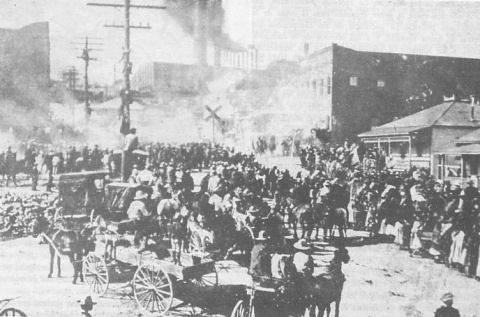




Cananea, Mexico: Col. W.C. Greene addressing a crowd of Mexicans, who shortly afterward fired the lu...

Striking workers in Cananea confront American possemen protecting the company store.

Strike in Cananea, Sonora.

This timespace is inspired by the 7th chapter of the book How to Hide an Empire, by Daniel Immerwahr. It tells the life of Puerto Rican nationalist Pedro Albizu Campos in the context of other nationalist movements and U.S. interventions in Latin America.